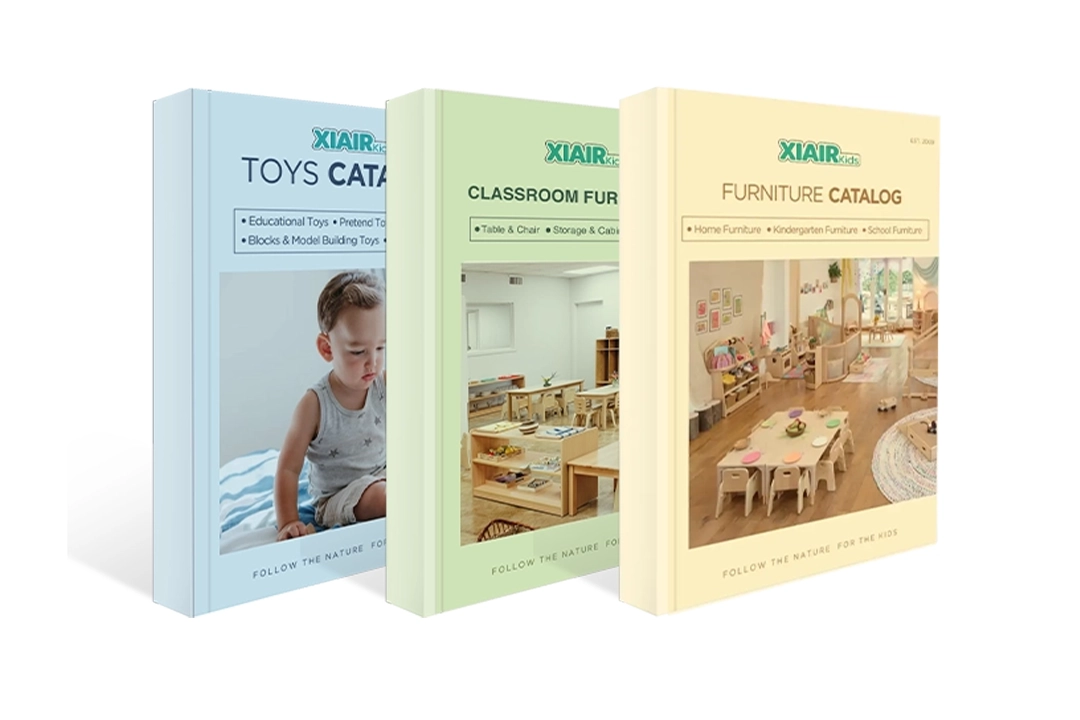Choosing what toy would a preschooler play with at any given stage can be surprisingly tricky. Are puzzles too advanced for a two-year-old? When is a child ready for role-playing toys? With so many toy options on the market, how do you know which ones actually match your child’s developmental needs?
Understanding child development can make answering what toy would a preschooler play with much clearer. By aligning toys with each stage of cognitive, emotional, and motor growth, we can offer the most beneficial play experiences. Whether it’s enhancing coordination through stacking games or building imagination with dolls and costumes, the right toy at the right time makes all the difference.
In the sections ahead, we’ll break down toy recommendations by specific developmental stages. You’ll learn how to choose toys that are not only fun but also help your preschooler thrive. Let’s explore the best play options that support learning and joy—keep reading to learn what toy would a preschooler play with?
Why Toys Matter in Early Childhood Development
Educational toys are far more than entertainment for young children—they are essential tools for learning, exploration, and growth. Through play, children make sense of the world around them, express emotions, build relationships, and develop critical skills across multiple domains.
1. Cognitive Development
Educational toys stimulate curiosity, problem-solving, and memory. From stacking blocks to sorting shapes and assembling puzzles, play helps children understand cause and effect, spatial relationships, and early math concepts.
2. Language and Communication
Pretend play, storytelling sets, and interactive classroom toys encourage children to express thoughts, expand vocabulary, and engage in conversation. Through role play, they learn to negotiate, take turns, and articulate needs.
3. Physical and Motor Skills
Manipulating toys such as building blocks, drawing tools, or push-and-pull toys refines fine and gross motor coordination. These movements build muscle strength, balance, and precise hand control—crucial for writing and self-care tasks later on.
4. Social and Emotional Growth
Toys promote sharing, empathy, and cooperation. Whether it’s a tea party with dolls or building a tower together, children learn to navigate emotions, follow rules, and resolve conflicts during interactive play.
5. Creativity and Imagination
Open-ended toys like costumes, loose parts, or construction sets unlock limitless imaginative play. Children experiment with roles, scenarios, and ideas, which boosts creative thinking and self-confidence.
How to Choose the Right Toy: A Guide to What Toy Would a Preschooler Play With
Selecting the right toy isn’t just about what’s trending or colorful—it’s about matching a toy to a child’s age, interests, and developmental needs. Whether you’re a parent, teacher, or caregiver, the goal is to find educational toys that spark curiosity, support growth, and bring joy. Here’s a guide on how to choose the right toys for kids.
Understand the Child’s Developmental Stage
Not all preschoolers are the same. A 3-year-old and a 5-year-old have very different abilities and interests. Use tonggak perkembangan as a guide to determine what they’re ready for cognitively, physically, and emotionally. This is the foundation for understanding what toys a preschooler would play with.
Choose Toys That Grow With the Child
Opt for classroom toys that offer multiple levels of engagement. For example, stacking blocks can be used for simple building at first, then evolve into complex structures or color sorting. These “open-ended” toys adapt as the child grows, giving more value over time and helping refine their thinking.
Prioritize Safety and Durability
Always check for age-appropriate labels and avoid classroom toys with small parts for younger preschoolers. Choose materials that are non-toxic, well-built, and easy to clean. Quality matters—especially for items that will be used frequently or in shared settings like classrooms or daycare.
Look for Multi-Sensory Engagement
The best toys activate more than one sense. Textured surfaces, sounds, movement, and bright colors keep children engaged and support sensory development. This also helps children with different learning styles absorb new information through play.
Balance Education and Entertainment
Educational toys shouldn’t be boring. Look for products that teach while entertaining, such as shape sorters, alphabet puzzles, and role-playing sets. These promote learning, vocabulary growth, and creativity without sacrificing fun and engagement.
Encourage Social Interaction
Select classroom toys that can be shared or played with in groups. Board games, puppet theaters, and building kits encourage cooperation, communication, and teamwork—critical skills during preschool years. Social play also builds emotional resilience and patience.
Support Specific Skills and Interests
Pay attention to the child’s passions. Is your child drawn to art, storytelling, or construction? Lean into those interests with themed toys. This keeps engagement high and learning more effective, while reinforcing personal identity and confidence.
Matching Toys to Developmental Domains
When choosing what toy would a preschooler play with, aligning your choices with the five key developmental domains ensures balanced growth. Below is a structured guide that explains what toy would a preschooler play with at different stages.
Physical Developmental Domain
Focus: Develops gross and fine motor skills, hand-eye coordination, spatial awareness, balance, and overall physical confidence. Helps children explore their bodies’ abilities and limits through active play.
Recommended Educational Toys for Kids:
- Tricycles and balance bikes
- Climbing gyms, tunnels, and slides
- Push-and-pull toys
- Bean bags and hopscotch mats
- Lacing cards and threading beads
- Peg boards and stacking blocks
- Play-dough tools and child-safe scissors
- Building bricks (e.g., Mega Bloks, Duplo)



Why These Matter:
Physical development supports everyday tasks like walking, feeding, writing, and self-care. Educational toys that encourage movement and coordination strengthen muscles and build the foundation for more complex motor skills later on.
Cognitive Developmental Domain
Focus: Stimulates memory, attention span, reasoning, spatial logic, sequencing, and problem-solving. Encourages curiosity, creativity, and intellectual risk-taking through discovery-based play.
Recommended Educational Toys for Kids:
- Wooden puzzles and logic games
- Shape sorters and nesting cups
- Sorting trays and sequencing cards
- STEM kits
- Magnet tiles
- Snap circuits and gear sets
- Memory matching cards
- Number puzzles and counting boards
- Cause-and-effect toys
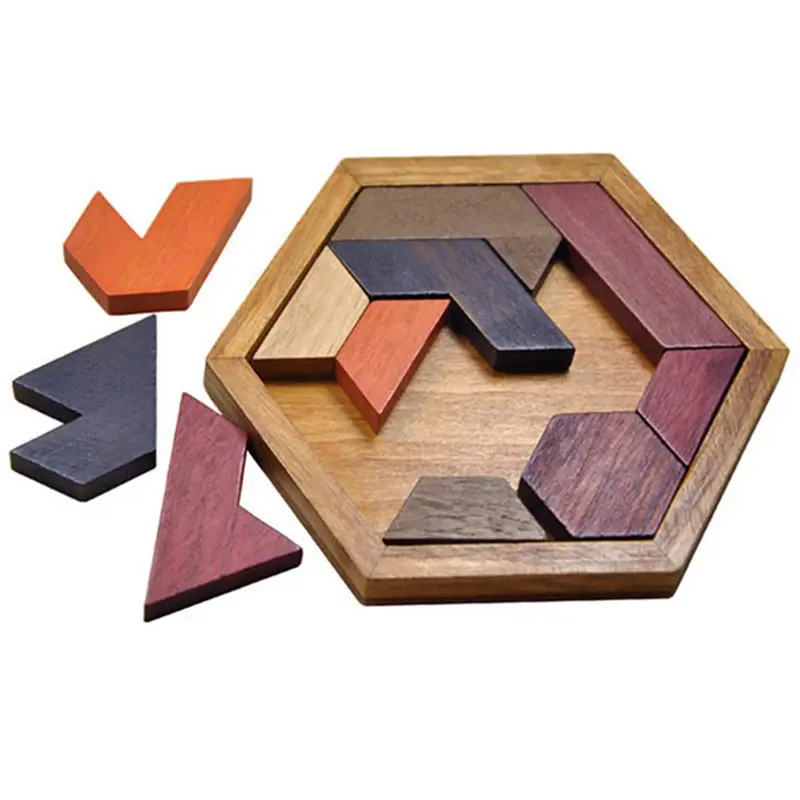


Why These Matter:
Cognitive skills help children process information, understand relationships between ideas, and build a foundation for academic subjects like math and science. These educational toys help preschoolers think critically and work through challenges.
Language & Communication Developmental Domain
Focus: Expands vocabulary, encourages expressive and receptive language, improves sentence structure, boosts listening skills, and lays the groundwork for reading and writing.
Recommended Educational Mainan for Kids:
- Puppets and finger puppets
- Alphabet magnets and phonics games
- Toy telephones and microphones
- Pretend play sets (e.g., vet, store, kitchen)
- Picture storytelling cards
- Rhyme and rhythm toys
- Talking or singing plush toys
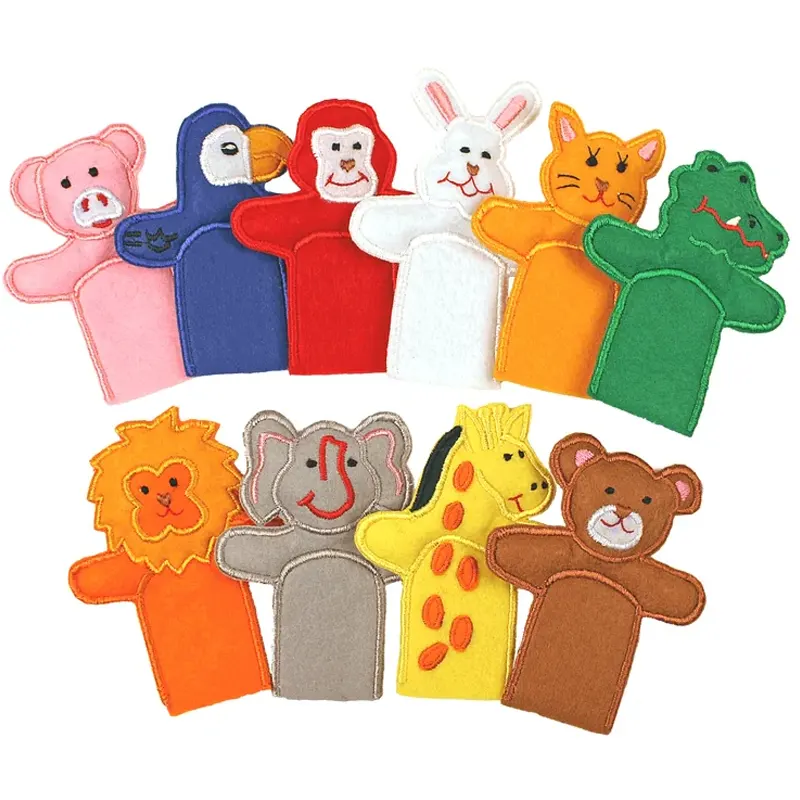

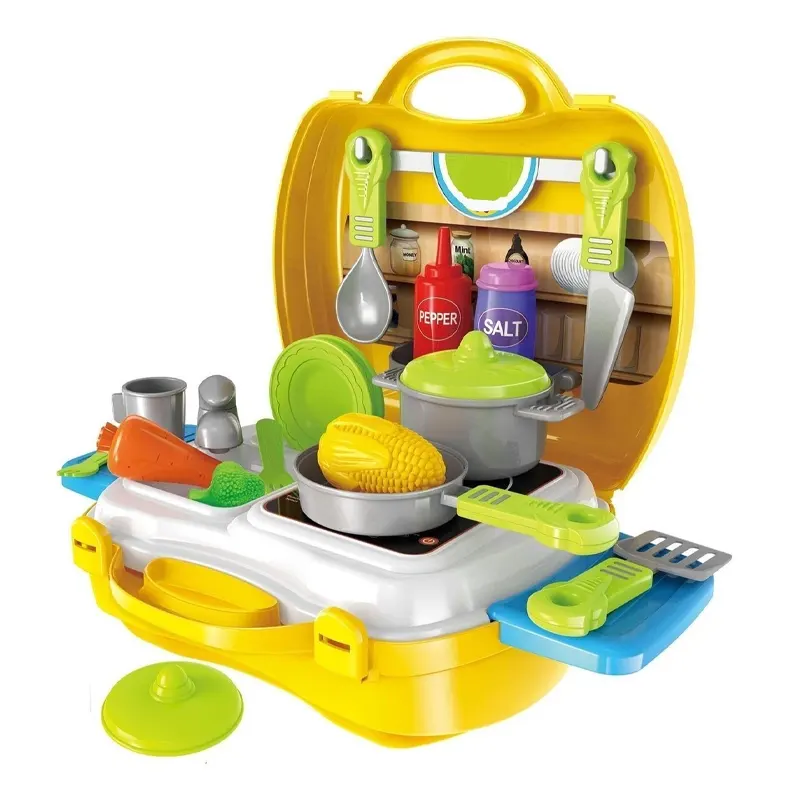
Why These Matter:
Strong language skills lead to better learning, emotional expression, and social success. Toys that promote verbal engagement prepare preschoolers for classroom communication and literacy development.
Social-Emotional Developmental Domain
Focus: Supports emotional regulation, empathy, social interaction, role understanding, sharing, and team participation. Encourages safe emotional expression through pretend and group play.
Recommended Educational Mainan for Kids:
- Dolls, plush toys, and comfort objects
- Dress-up clothes and mirrors
- Play kitchens, toolkits, and dollhouses
- Expression Puzzle
- Family and community figurine sets
- Puppet theaters with emotional role-play puppets
- Emotion flashcards or mood wheels
- Toy tents or playhouses for cooperative play


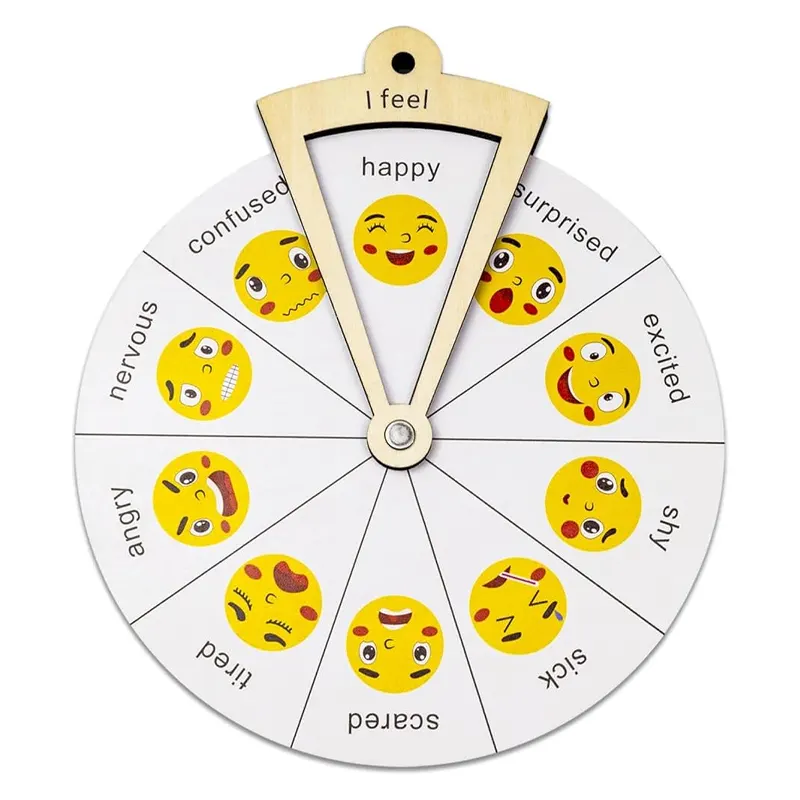
Why These Matter:
Social-emotional growth equips preschoolers to form friendships, express feelings appropriately, and resolve conflicts. These classroom toys help children understand themselves and others in a positive, playful way.
Adaptive (Self-Help) Developmental Domain
Focus: Teaches independence, self-care, time awareness, personal responsibility, and real-life practical skills by mirroring everyday routines through interactive toys.
Recommended Educational Mainan for Kids:
- Dressing frames and button boards
- Toy sinks, toothbrush kits, and grooming sets
- Miniature cleaning tools (e.g., mop, broom)
- Play kitchens and dishwashing stations
- Pretend grocery carts and meal prep kits
- Potty training dolls
- Magnetic routine charts and chore boards
- Toy laundry machines and ironing boards


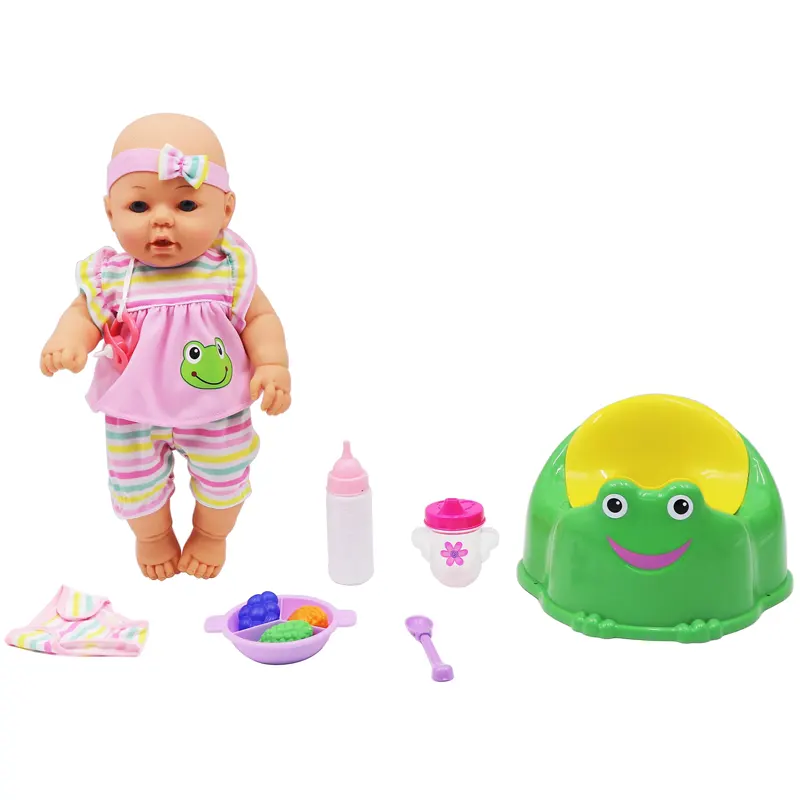
Why These Matter:
Self-help toys build a child’s confidence and autonomy in handling basic life tasks. These tools prepare children for kindergarten readiness and reduce dependency on adults for daily routines.
Ruang kelas impian Anda hanya tinggal satu klik saja!
The Evolution of Play: What Toy Would a Preschooler Play With?
Preschoolers’ social development is reflected in how their play behaviors change over time. From passive observation to active teamwork, play evolves in six distinct stages. Understanding these phases helps adults know what toy would a preschooler play with and create environments that support a child’s social, emotional, and cognitive growth.
Unoccupied Play (Birth to 3 Months)
Children appear to be randomly moving without a clear purpose. These movements help them discover their body and begin sensory exploration.
Recommended Educational Mainan for Kids:
- High-Contrast Mobiles: Stimulate visual tracking and attention.
- Soft Crinkle Toys: Engage auditory senses and fine motor skills.
- Tummy Time Mats: Encourage early motor development.



Developmental Impact:
These educational toys activate sensory pathways and foster early neural connections essential for motor planning and awareness.
Solitary Play (3 Months to 2 Years)
Children play alone, focusing on their own activities without interest in what others are doing.
Recommended Educational Mainan for Kids:
- Stacking Cups: Build fine motor control and problem-solving.
- Light-and-Sound Toys: Reinforce cause-and-effect logic.
- Texture Balls: Encourage tactile exploration and grasping skills.
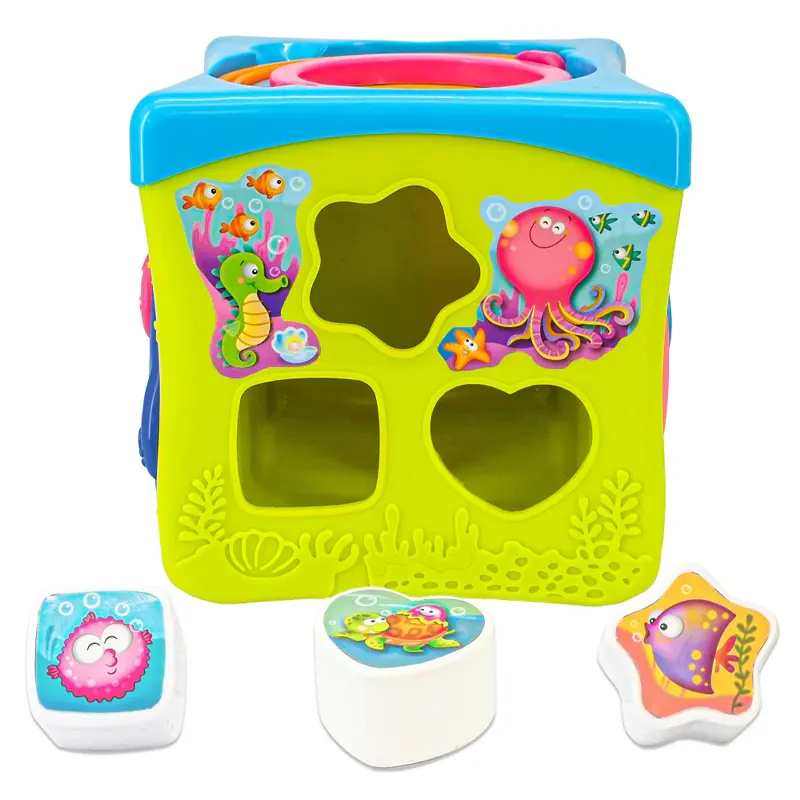


Developmental Impact:
Solitary play promotes self-confidence, attention span, and independent learning—foundations for later complex play and learning.
Onlooker Play (Around 2 Years)
Children observe others playing but do not participate. They may ask questions or comment without direct involvement.
Recommended Educational Mainan for Kids:
- Pretend Play Figures: Allow children to role-play what they observe.
- Animal Figurines or Dollhouses: Enable silent observation and storytelling.
- Pretend play sets: Allow observation of role-play dynamics and imaginative sequences.
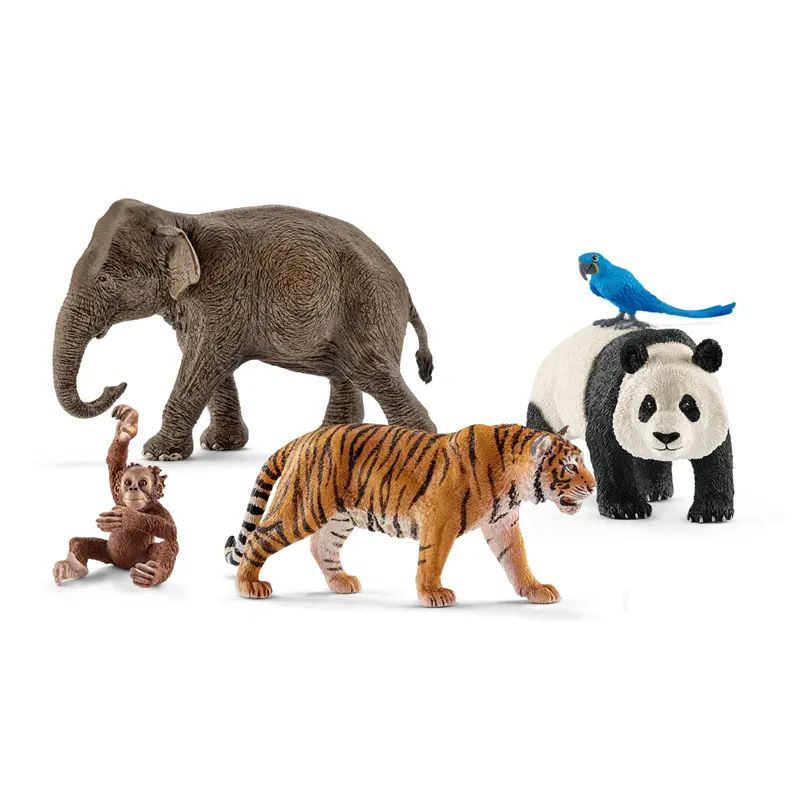

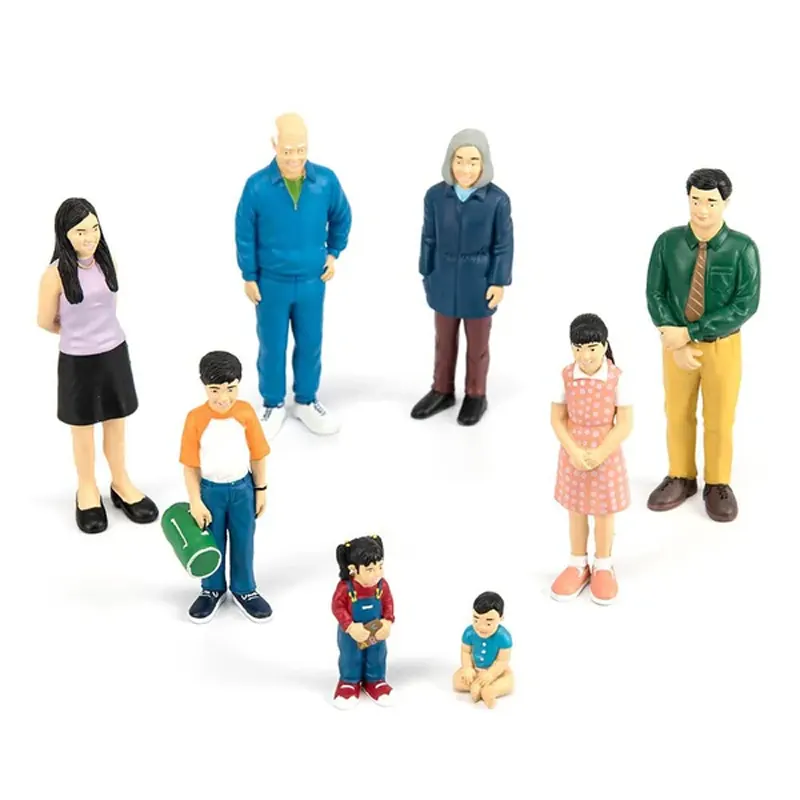
Developmental Impact:
This stage supports social learning, language development, and an understanding of group behavior before direct engagement.
Parallel Play (2–3 Years)
Children play side-by-side using similar materials but do not interact directly. They are aware of others but remain focused on their own play.
Recommended Educational Mainan for Kids:
- Toy Trains with Separate Tracks: Encourage mirrored play and creativity in close quarters.
- Pull-Back Cars and Race Tracks: Great for side-by-side play where each child can race their own vehicle, observe speed and motion, and imitate each other’s techniques.
- Simple Peg Puzzles: Enable quiet concentration on a solo task while sitting next to peers doing similar puzzles, encouraging turn-taking and matching skills.

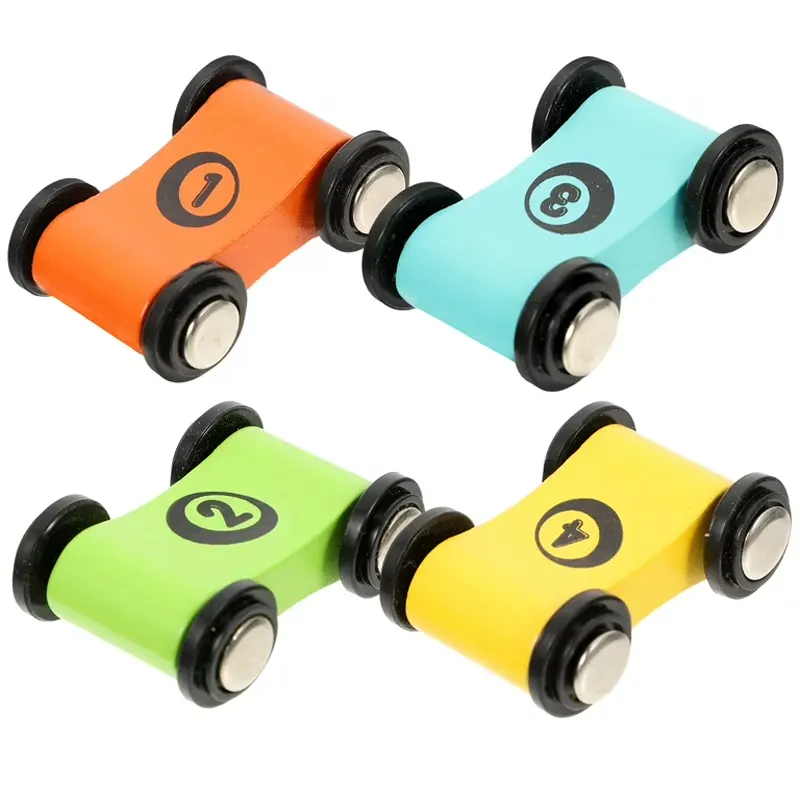

Developmental Impact:
Parallel play enhances spatial awareness, social boundaries, and early empathy through shared experiences in a low-pressure environment.
Associative Play (3–4 Years)
Children begin to interact, share materials, and talk, though their play is not yet fully coordinated or goal-driven.
Recommended Educational Mainan for Kids:
- Dollhouses: Promote joint storytelling and allow multiple children to control characters and scenarios.
- Simple Board Games: Introduce shared rules and turn-taking.
- Doctor Kits: Help children explore empathy and cooperation through shared medical play.


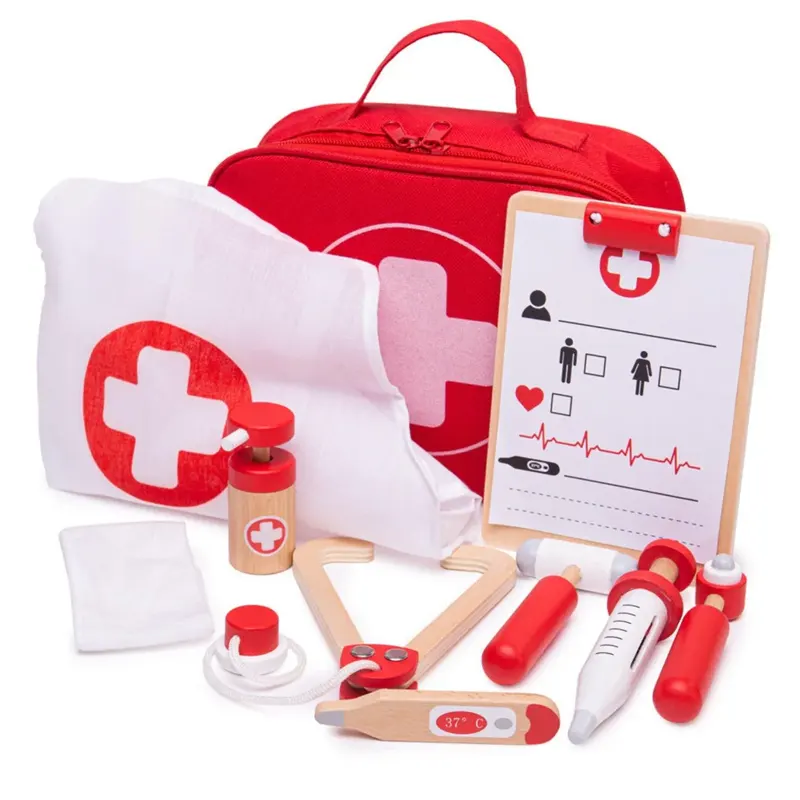
Developmental Impact:
This stage promotes communication skills, the beginnings of teamwork, and the concept of shared experience and reciprocity.
Cooperative Play (4+ Years)
Children engage in organized play with rules, roles, and shared goals. They collaborate, negotiate, and build lasting social skills.
Recommended Educational Mainan for Kids:
- Puppet Theaters: Promote story planning, script negotiation, and shared performance.
- LEGO or Complex Building Blocks: Encourage planning, teamwork, and joint problem-solving during large-scale builds.
- STEM Kits for Group Projects: Involve multiple steps and roles, ideal for assigning team tasks.



Developmental Impact:
Cooperative play strengthens leadership, empathy, conflict resolution, and real-world social functioning, crucial for school readiness and life skills.
Ruang kelas impian Anda hanya tinggal satu klik saja!
Toy Types Across Educational Philosophies
Understanding what toy could a preschooler play with depends not just on age or development, but also on the values of the educational approach being followed. Here are educational toys under different educational philosophies:
Bahan Montessori
Montessori education emphasizes learning through hands-on, meaningful experiences. The carefully designed materials used in Montessori classrooms aren’t just “toys”—they are tools for building intellectual, emotional, and physical independence. These materials are intentionally structured to follow the child’s natural developmental path, progressing from concrete to abstract, and always allowing for repetition, self-correction, and intrinsic motivation. Below, we explore the core Montessori material categories that guide preschoolers through a holistic learning journey.
Sensorial
Sensorial materials in Montessori education are designed to refine and isolate each of the child’s senses—sight, touch, sound, smell, taste, as well as baric (weight), thermic (temperature), and stereognostic (form through touch) senses. These materials introduce one sensory quality at a time, allowing children to classify and compare experiences consciously. This process lays the groundwork for scientific thinking and mathematical reasoning by helping the child organize and interpret their environment in a structured way.

What Toy Would a Preschooler Play With?
- Pink Tower
- Knobbed Cylinders
- Color Tablets
- Sound Cylinders
- Fabric Boxes
Language
Language materials in the Montessori guide children from phonemic awareness to fluent reading and writing using a multisensory, structured progression. Through tactile experiences like tracing sandpaper letters and assembling words with the movable alphabet, children internalize sound-symbol relationships. The approach emphasizes meaningful vocabulary development, grammar structure, and expressive language skills in a self-directed and engaging way.

What Toy Would a Preschooler Play With?
- Sandpaper Letters
- Moveable Alphabet
- Object Boxes
- Three-Part Cards
- Metal Insets
Practical Life
Practical Life materials replicate real-world tasks and are central to Montessori’s philosophy of fostering independence, order, concentration, and coordination. Through hands-on activities like pouring, buttoning, or polishing, children not only practice fine motor control but also gain confidence and responsibility by participating meaningfully in their environment. These foundational exercises also prepare the mind and body for more complex academic work.

What Toy Would a Preschooler Play With?
- Dressing Frames
- Pouring Sets
- Spooning and Transferring Tools
- Floor Cleaning Tools
- Flower Arranging Kits
Mathematics
Montessori math materials present abstract mathematical concepts through concrete, hands-on tools that children can manipulate and explore. Starting with tangible representations of quantity and gradually moving toward symbol recognition and calculation, these materials develop logical thinking, number sense, and internalized understanding of operations. The materials follow a precise sequence, helping children move from the concrete to the abstract with clarity and confidence.

What Toy Would a Preschooler Play With?
- Number Rods and Sandpaper Numerals
- Golden Beads
- Bead Stairs
- Seguin Boards
- Stamp Game
Biology
Biology materials in Kelas Montessori introduce children to the classification and structure of living organisms. They cultivate a sense of wonder and curiosity about the natural world while teaching scientific vocabulary and observation skills. These tools help children explore the parts, functions, and lifecycles of animals and plants, laying the foundation for later scientific inquiry and environmental stewardship.
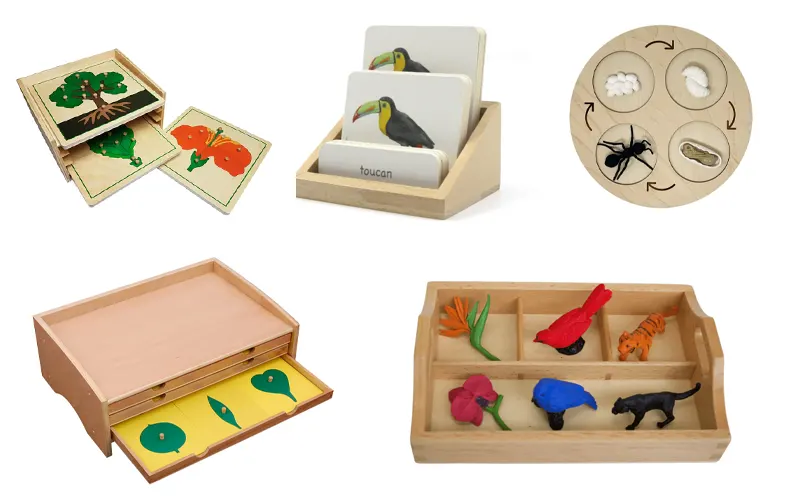
What Toy Would a Preschooler Play With?
- Classification Sorting Trays
- Zoology and Botany Puzzles
- Three-Part Cards
- Leaf Cabinet
- Life Cycle Models
Geography
Montessori geography materials help children understand the structure of the physical world and the diverse cultures within it. These materials begin with sensorial experiences, such as identifying land and water, and expand into the study of continents, countries, landforms, and human culture. They promote spatial awareness, environmental respect, and global citizenship through tactile and visual exploration.

What Toy Would a Preschooler Play With?
- Sandpaper Globe and Colored Globe
- Puzzle Maps
- Land and Water Form Trays
- Continent Boxes
- Flag Matching Sets
Ruang kelas impian Anda hanya tinggal satu klik saja!
Mainan Reggio Emilia
The Reggio Emilia approach views children as capable, curious, and full of potential. Toys in this philosophy are open-ended, natural, and designed to inspire discovery, collaboration, and creativity. Here are the core categories of classroom toys that align with Reggio principles:
Loose Parts Play Materials

Loose parts are open-ended materials that children can move, combine, redesign, and repurpose in endless ways. These include items like buttons, wooden discs, fabric scraps, shells, sticks, and corks. They support critical thinking, innovation, and creative expression—key pillars of Reggio learning—by allowing children to construct meaning and tell stories through self-directed experimentation.
Bahan Alami
Toys made from natural elements like wood, stone, wool, and clay are preferred in Reggio settings. These materials engage the senses more deeply than plastic and promote a connection to nature. They also provide varied textures, weights, and temperatures that spark curiosity and observational skills in young learners.

Art Exploration Tools

Art is a central language in Reggio Emilia. Toys in this category include child-accessible materials like pastels, watercolors, charcoal, clay, wire, and recycled crafting items. These tools are not about crafting final products, but about process-based exploration where children express thoughts, feelings, and discoveries through visual storytelling.
Light and Shadow Play Materials
In Reggio-inspired classrooms, light is seen as a tool for inquiry. Toys include light tables, transparent colored blocks, mirrors, overhead projectors, and translucent materials. These tools allow children to explore reflection, refraction, shape, and symmetry, opening up opportunities for artistic and scientific exploration.

Dramatic Play Props and Figures
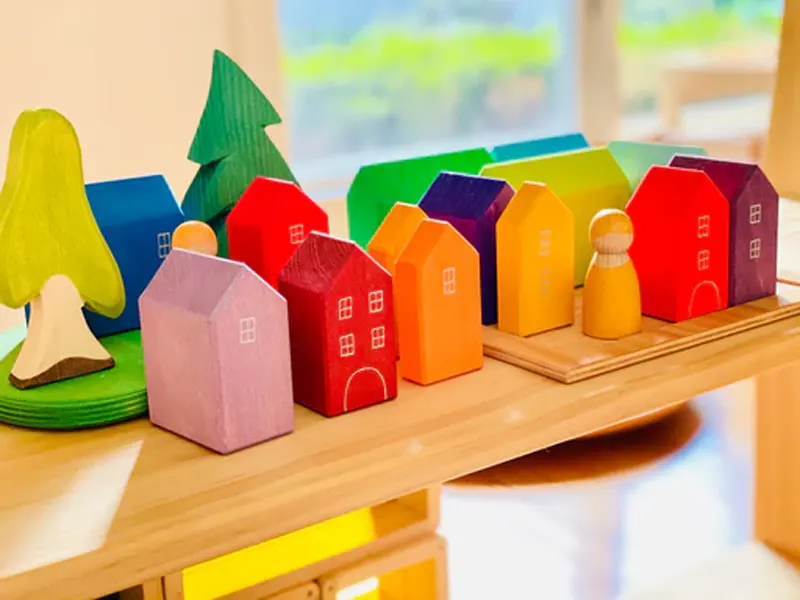
Dramatic play is integral to identity formation and social development. Reggio-style dramatic play encourages storytelling and role exploration using open-ended props like scarves, hats, cardboard boxes, baskets, and dolls with simple features. Children act out real or imagined scenarios, processing experiences and building empathy.
Every stage of early childhood brings new skills, challenges, and opportunities for discovery. The right toys not only entertain but also help children grow intellectually, physically, and emotionally. Here’s a clear guide to choosing age-appropriate toys that align with key developmental milestones from birth to age five.
Age-Appropriate Toy Recommendations
Every stage of early childhood brings new skills, challenges, and opportunities for discovery. The right toys not only entertain but also help children grow intellectually, physically, and emotionally. Here’s a clear guide to choosing age-appropriate toys that align with key developmental milestones from birth to age five.
Infant (0–12 Months): What Toy Would Infants Play With?
Infants spend their first year learning about the world through their senses. Their play is focused on visual tracking, listening to sounds, reaching, and grasping. Toys for this stage should be safe, simple, and sensory-rich.

Toys for Infants:
- High-contrast visual toys to stimulate early sight
- Soft rattles for auditory engagement and grip practice
- Tummy time mirrors to encourage neck strength and social awareness
- Textured teething rings to relieve gums and provide tactile input
- Activity gyms with dangling elements to support reaching and coordination
These toys foster foundational skills like sensory awareness, early movement, and body control, laying the groundwork for future exploration.
Toddler (12–36 Months): What Toy Would Toddlers Play With?
Toddlers are full of energy, curiosity, and a growing desire to mimic adult behaviors. They’re learning to walk, talk, sort, stack, and explore their environment more actively. Toys for this age should support independence, fine motor development, and imaginative play.

Toys for Toddlers:
- Push-and-pull toys to enhance balance and mobility
- Stacking blocks and nesting cups for spatial reasoning
- Simple shape sorters to build hand-eye coordination and logic
- Pretend play items like toy phones, tool kits, or cooking sets
- Interactive books with textures, flaps, or sounds to support language development
Toys at this stage encourage autonomy, problem-solving, and communication as toddlers begin to express themselves and interact with others more meaningfully.
Preschooler (3–5 Years): What Toy Would a Preschooler Play With?
Preschoolers are imaginative, social, and increasingly interested in learning how the world works. They are ready for classroom toys that challenge their thinking, support group play, and build skills that prepare them for school.

Toys for Preschoolers:
- Role-play sets and costumes to encourage creativity and social interaction
- Simple board games that teach rules, patience, and cooperation
- Building toys like LEGO and magnetic tiles to strengthen planning and fine motor skills
- Alphabet and number toys to promote early literacy and numeracy
- Art supplies for painting, coloring, and crafting to express ideas and emotions
These mainan kelas support school readiness, emotional growth, and cognitive development, all while allowing preschoolers to explore through joyful, self-directed play.
Safety Considerations: What Toy Would a Preschooler Play With?
Children’s toys are more than just entertainment—they are developmental tools. But before considering a toy’s educational value or fun factor, safety must come first. Whether you’re shopping for toys for a 1-year-old or selecting gifts for preschoolers, the wrong toy can pose serious risks if safety is overlooked.
Age Appropriateness Is More Than a Suggestion
One of the most basic yet vital safety checks is the age recommendation on a toy’s packaging. These guidelines are not arbitrary—they’re based on extensive research regarding children’s developmental abilities and potential hazards.
A toy designed for a 4-year-old may include small parts that are dangerous to a 2-year-old. For example, toys for 1-year-old babies should never include removable components, beads, or buttons.
Material Safety Matters
Children—especially infants and toddlers—explore the world by putting objects in their mouths. This makes material composition a top priority. Always choose toys made from non-toxic, BPA-free plastic, food-grade silicone, or unfinished natural wood. Be wary of toys with strong chemical odors, flaking paint, or unclear material labeling.
Many high-quality toys are certified under standards like ASTM F963 (U.S.), EN71 (Europe), or are labeled CPSIA-compliant, which ensures they’re free from heavy metals, phthalates, and harmful dyes.
Beware of Choking Hazards and Small Parts
For children under 3 years old, choking is the most common toy-related danger. Any part that can fit inside a toilet paper roll or a small parts tester cylinder poses a risk.
Watch out for:
- Detachable eyes or accessories on plush toys
- Small plastic puzzle pieces
- Magnetic toys (especially rare-earth magnets)
- Button batteries without screw-secured compartments
For toddlers, especially when selecting toys for 2-year-olds, stick with large, solid pieces—think oversized building blocks or simple shape sorters.
Durability and Construction Quality
Durability is essential, particularly for active toddlers. A toy that breaks easily can expose sharp edges, wires, or small internal components.
When assessing a toy, try gently pulling, twisting, and dropping it. Does it crack or loosen? Does the paint chip? High-quality toys are made to withstand rough handling, especially those intended for toddlers aged 1–3.
Beware of Hidden Dangers
Strings and cords longer than 7 inches (18 cm) can present strangulation hazards for infants and toddlers. This is a common concern with pull toys or musical toys with headphone-style cords.
Avoid:
- Toys with long cords or hanging loops
- Necklaces or lanyards marketed as toys
- Toys with elastic bands that can snap
Battery and Sound Safety
If a toy uses batteries, check that the battery compartment is child-resistant (usually requiring a screwdriver). Button batteries are particularly dangerous if swallowed, leading to serious internal burns.
Also, consider the sound level of electronic toys. Some educational toys for preschoolers emit noises exceeding safe levels for children. Choose toys with volume control or look for options labeled “hearing safe.”
Regular Toy Maintenance
Even the safest toy can become dangerous over time due to wear and tear. It’s good practice to:
- Inspect toys weekly for cracks, missing parts, or frayed edges
- Clean and sanitize frequently used toys, especially for babies and toddlers
- Discard any broken items promptly, even if they were expensive
Encourage children to help with toy maintenance as they grow older—it’s a simple way to teach responsibility and safety awareness.
Maximizing the Impact of Toys: Tips for Educators and Parents
Educational toys are powerful tools for early learning, but their effectiveness depends on how they’re introduced, used, and supported by adults. Whether at home or in the classroom, thoughtful engagement can turn everyday play into meaningful growth. Here are key strategies to help educators and parents make the most of the toys children play with.

Choose Open-Ended Toys for Kids
Select toys for kids that can be used in multiple ways rather than those with a single outcome. Open-ended materials like blocks, figurines, and art supplies invite creativity and allow children to explore, construct, and imagine without limits. These educational toys grow with the child and support a wide range of developmental skills over time.
Rotate and Refresh Materials
To maintain interest and challenge, avoid overwhelming children with too many toys at once. Instead, display a limited selection and rotate toys every few weeks. This encourages deeper engagement and makes familiar toys feel new again. For classrooms, organize toys into themed units or learning centers to align with developmental goals.
Observe Before Intervening
Let children lead their own play. Step back and observe how they interact with toys—how they solve problems, experiment, and create. Rather than directing the play, offer subtle prompts or ask open-ended questions (“What do you think will happen next?”) to extend thinking without taking control.
Model Play Without Taking Over
Sometimes, children benefit from seeing how toys can be used. Model how to build with blocks, role-play a scene, or explore a puzzle—but then invite the child to take the lead. Demonstrating without dominating helps build confidence and opens new paths for independent exploration.
Encourage Collaboration
Many toys become more valuable when shared. Facilitate cooperative play by offering toys that support teamwork, such as board games, construction sets, or pretend-play props. For younger children, start with parallel play activities and gently scaffold toward collaboration.
Create an Intentional Environment
The setup of the play area matters. Store classroom toys on low, open shelves where children can access and return them independently. Use baskets or bins for sorting by type or theme. In classrooms, create quiet zones, dramatic play corners, and sensory stations that invite specific types of play and exploration.
Jangan hanya bermimpi, rancanglah! Mari kita bicarakan kebutuhan furnitur khusus Anda!
Connect Play to Real Life
Help children see the relevance of toys to the world around them. Link pretend play scenarios to daily life (e.g., shopping, cooking, gardening), and use tools like magnifying glasses, toy animals, or maps to explore real-world topics. This deepens understanding and adds context to their discoveries.
Respect Play as Learning
Finally, understand that play is not a break from learning—it is learning. Resist the urge to rush toward academic outcomes. When children are deeply engaged with a toy, they’re developing essential skills: focus, resilience, curiosity, communication, and problem-solving.
Tips for Toy Rotation and Engagement
Children thrive on curiosity and novelty, but that doesn’t mean they need a constant supply of new toys. Too many toys at once can overwhelm a child, leading to boredom and distraction. Toy rotation is a simple yet powerful strategy to reignite engagement, foster creativity, and maintain a clutter-free environment.

Why Rotate Toys for Kids?
Toy rotation mimics the principle of novelty without the need for frequent new purchases. When only a portion of the toys is available at a time:
- Children play more deeply and for longer periods.
- They rediscover interest in “old” toys when reintroduced.
- Clutter and overstimulation are reduced, creating a calmer space.
- Cognitive and creative development is supported, as children focus more effectively.
This is especially useful for toddlers and preschoolers, where toys for 2-year-olds atau toys for 3-year-olds often involve a mix of puzzles, building sets, and pretend play kits.
How to Start a Toy Rotation System
Step 1: Declutter and Categorize
Begin by sorting all toys into categories—blocks, puzzles, pretend play, sensory toys, etc. Discard broken items or toys your child has clearly outgrown.
Step 2: Divide Into Rotational Sets
Create 3–5 toy collections that each include a variety of play types. For instance, a set might include:
- A fine motor toy (e.g., Melissa & Doug lacing beads)
- A pretend play item (e.g., toy food set)
- A construction toy (e.g., LEGO DUPLO)
- A puzzle or matching game
- A sensory toy (e.g., texture balls or a busy board)
Step 3: Store Smartly
Keep unused toy sets in labeled bins, stored out of sight but easy to access for rotation. Clear plastic containers or canvas boxes work well.
Step 4: Establish a Rotation Schedule
Most families rotate toys weekly or biweekly. Observe your child—if they seem bored or overstimulated, it may be time to switch.
Engagement Boosters: Tips Beyond Rotation
Even with rotation, keeping toys engaging requires thoughtful strategies:
- Introduce toys with a purpose: Set up a mini scene or story using the toys. For example, create a dinosaur park with figures or a grocery setup with pretend food.
- Model new ways to play: Demonstrate how to build a ramp for cars or create patterns with blocks.
- Pair toys creatively: Combine a dollhouse with animal figures, or magnetic tiles with cars to expand play possibilities.
- Include the child in rotation: Older toddlers and preschoolers enjoy helping choose which toys come out next.
For toys for 1-year-old children, engagement can also be enhanced by varying sensory play, rotating between musical toys, stacking cups, and simple cause-and-effect gadgets.
Observe and Adapt
Every child has unique interests and attention patterns. Pay attention to:
- Which toys do they gravitate toward?
- How long do they play before moving on?
- Are certain toys always ignored?
Adjust your sets based on these observations. It’s not about following a strict schedule—it’s about responding to your child’s developmental needs and curiosity.
How to Observe and Respond to Children’s Toy Preferences
Understanding a child’s toy preferences offers critical insight into their developmental stage, personality, and emerging skills. Observing how they engage with toys—and thoughtfully responding—can help foster creativity, confidence, and cognitive growth.

Observe Engagement, Not Just Choice
When evaluating a child’s toy preferences, look beyond the toys they initially select. Focus on:
- Time Spent: Which toys hold their attention the longest?
- Pengulangan: Are there toys or activities they return to regularly?
- Focus Level: Are they deeply engaged or frequently distracted?
- Emotional Response: Do certain toys excite or soothe them?
These cues can reveal whether a child prefers open-ended creativity, structured problem-solving, physical activity, or imaginative scenarios.
Watch for Developmental Alignment
A child’s toy preference often reflects their developmental needs. For example:
- A 1-year-old who loves stacking blocks may be refining fine motor coordination.
- A 2-year-old absorbed in pretend cooking shows a growing interest in role-play and imitation.
- A 3–5-year-old intensely focused on puzzles or building sets may be developing patience and spatial reasoning.
Matching educational toys with developmental stages ensures that play remains both enjoyable and enriching.
Note Patterns Across Contexts
Children’s preferences can vary depending on:
- Setting: Do they prefer certain toys at home vs. in group settings?
- Peer Influence: Are they imitating older siblings or friends?
- Mood: Do they seek sensory toys when upset, or energetic toys when excited?
Understanding these patterns helps caregivers introduce toys at the right time and place.
Respond with Intentional Choices
Once patterns are identified:
- Expand the Category: If a child loves vehicles, introduce ramps, garages, and transport-themed books.
- Offer Variations: Rotate similar toys (e.g., different building blocks or dolls) to sustain interest and challenge.
- Incorporate Learning Goals: Choose toys that subtly integrate skills like counting, color sorting, or storytelling.
This tailored approach enhances both engagement and learning.
Use Preferences to Guide Learning
A child’s favorite toys can be powerful tools for educational development. For instance:
- A dinosaur-obsessed child may enjoy alphabet matching with dinosaur flashcards.
- A puzzle-lover might be introduced to early math through shape puzzles or tangrams.
- A music-loving toddler can develop rhythm and coordination with xylophones and shakers.
By connecting interests with learning, you naturally extend your attention span and curiosity.
Encourage Autonomy and Exploration
Finally, allow room for the child to direct play:
- Create an accessible, organized toy space.
- Offer a mix of familiar favorites and new challenges.
- Respect their “no’s”—a lack of interest is just as informative as a preference.
Allowing choice nurtures independence and helps children feel respected and understood.
Jangan hanya bermimpi, rancanglah! Mari kita bicarakan kebutuhan furnitur khusus Anda!
Tanya Jawab Umum
- What types of toys are best for brain development in early childhood?
Toys that promote problem-solving, exploration, and imagination—such as building blocks, puzzles, and open-ended materials—are excellent for cognitive development. They help children think critically, experiment, and understand cause and effect. - How do I choose age-appropriate toys for my child?
Look for toys labeled with age recommendations and observe your child’s current abilities and interests. Choose toys that match their developmental stage—not just their age—while offering a little challenge to promote growth. - Are electronic toys beneficial for young children?
While some electronic toys can introduce early learning concepts, it’s important to limit screen-based or button-press-only toys. Hands-on, open-ended toys generally provide richer opportunities for creativity, communication, and active engagement. - What should I consider when buying toys for 1-year-olds?
Focus on safety, simplicity, and sensory engagement. Look for toys that are large, non-toxic, and free of small parts. Rattles, stacking toys, push-and-pull toys, and soft books are excellent choices for this age group. - How can I encourage my child to use educational toys creatively?
Provide open-ended toys and avoid toys that only do one thing. Rotate materials regularly, model imaginative play without taking over, and ask open-ended questions like, “What else could this be?” - What toys are most helpful for language development?
Books, puppets, pretend-play sets, and storytelling props help build vocabulary and conversation skills. Toys that prompt dialogue and narration support expressive and receptive language growth. - How often should I rotate my child’s toys?
Rotating toys every 1–2 weeks helps keep play fresh and encourages deeper engagement. Keep a few favorites always available and rotate the rest to match emerging interests or developmental milestones. - What are the signs a toy is developmentally appropriate?
The toy should challenge—but not frustrate—your child. It should align with their motor skills, attention span, and interests. If they can use it independently and stay engaged for several minutes, it’s a good fit. - Is it better to have many toys or just a few high-quality ones?
Fewer, well-chosen toys are typically more effective than a large collection. High-quality toys that encourage creativity, problem-solving, and long-term use offer far more developmental value than large quantities. - Where can I find safe, well-made toys for my child?
Look for reputable brands that follow safety standards and use non-toxic materials. Xiair Worldoffers a wide range of high-quality, age-appropriate toys designed to support early learning, creativity, and child-led discovery.
Kesimpulan
Understanding what toys a preschooler plays with—and when—is essential for nurturing healthy development, creativity, and confidence in early childhood. Whether you’re choosing toys for an infant discovering their senses, a toddler learning to explore, or a preschooler preparing for school, thoughtful selection makes all the difference. The right toys foster imagination, communication, coordination, and a lifelong love of learning.
For parents and educators seeking trusted, developmentally appropriate play solutions, Xiair Worldoffers a curated collection of high-quality children’s toys designed to meet every stage of growth. From open-ended materials and sensory play items to STEM-inspired learning sets and imaginative play tools, Xiair World World World’s products support meaningful, skill-building fun.
Explore Xiair World World World’s selection to find toys that are not only safe and durable, but also crafted to inspire. Because when play is intentional, learning never feels like work—it feels like joy.



